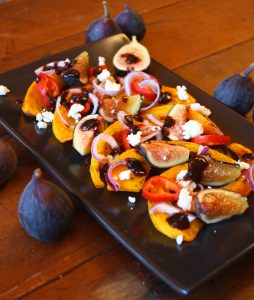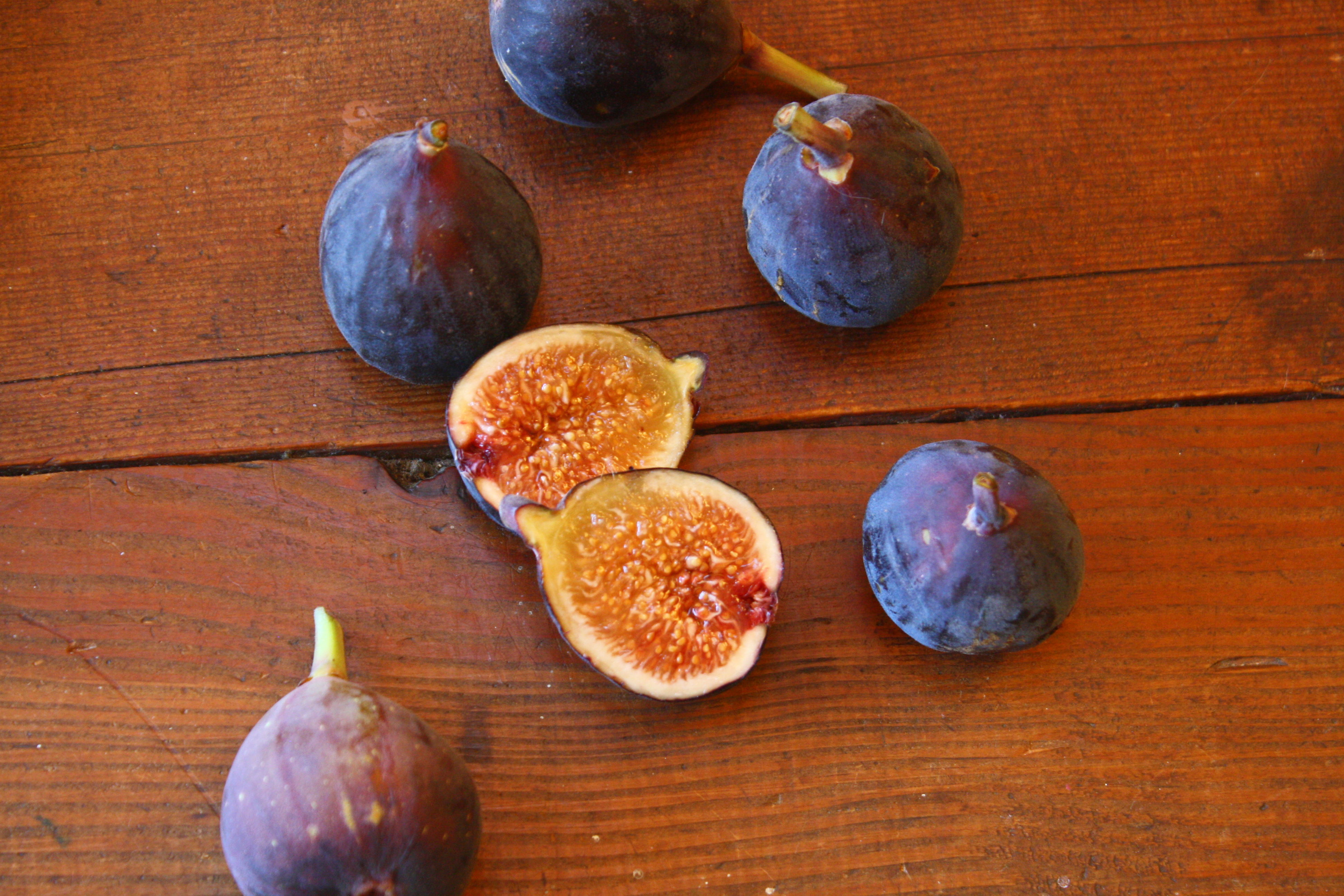By Dana Zia
Tender, sweet and utterly seductive the fig has won hearts and started wars. Cleopatra actually died for them. She loved them so much that the asp who killed her was brought to her in a basket of figs. Our sweet little fig has had wars started over her when the Romans took over ancient Carthage just because it was loaded with fig trees. Many have fallen to the feminine wiles of this fruit that represents abundance, sweetness and fertility.
In fact, figs are a true first love of humans. Historians figure that the fig is truly the oldest cultivated fruit in the history. There have been found remains of this beloved fruit in a Neolithic village in the Jordon River Valley that dates back 11,000 years ago. So far this is the first known instance of agricultural, over 1,000 years older than even wheat. I tell you, this fruit has persuasion powers!
This precious fruit is also one of the first waxed poetically about in history. Adam and Eve were reported sporting the latest fashion in loin cloths made by fig leaves around 20BC. Then we have the venerable Buddha who obtained enlightenment under a giant fig tree, known as the Bodhi tree (probably by eating the fruit.)
Cleopatra craved these little nuggets for more than their sweetness; they are super high in antioxidants and dietary fiber. Figs also contain high levels of calcium, iron and potassium. Ancient Egyptians venerated them for ability to keep the digestive system moving and would bury their royalty with a basket of figs. (Mummies need fiber?) Roman troops would carry ropes of dried figs with them on their conquests since they are so nutrient dense. So I guess you could say the Roman Empire was built on figs.
The ancient cultures loved and died for figs and in our culture many people don’t know them outside a fig newton. If you have never tried them fresh, you are in for a treat! They are eaten, skin and all, but some people insist on peeling them. There are many varieties but the one that is the most present in the stores right now is the black mission fig from California. (In fact, 98% of all figs in the US are from California.)
The fresh fig is a rare commodity that you can only get in the summer and early fall. The reason is that they don’t travel well because figs will not ripen well after being picked, so they are extremely perishable and precious. When you are choosing your figs, make sure and pick ones that are soft and fragrant but not mushy. It is best to store in the fridge but are more delicious eaten at room temperature. Eat or use them quickly as they are a transient pleasure to be enjoyed immediately.
Figs are brilliant with goat cheese and bacon. Cut them in half, stuff them with goat cheese then wrap them in a small piece of bacon and roast them till the bacon is done. A bite of this and your knees will buckle and you will see figs in a WHOLE new light. This recipe I’m sharing today is a fabulous combo of many of the other flavors that pair well with figs and also spot light late summer produce. Enjoy the fruit of the ancients, while you can!

Roasted squash with fresh figs in fig balsamic reduction
1 large butternut squash, peeled and sliced into wedges
(OR 4 small sweet potatoes)
5-6 TBLS of olive oil
2 TBLS of fresh herbs minced fine
(I used rosemary)
Salt and pepper to taste
1 red onion, sliced thin and chopped
1 red chili, thinly sliced (I used a mild one)
6-8 ripe figs, quartered
5 oz goat cheese, crumbled
The fig balsamic reduction
1 cup of balsamic vinegar
8 figs diced
Heat your oven up to 400 degrees, peel and cut up your squash into wedges. Toss the wedges with 5 TBLS of the olive oil, some salt and a few cranks of black pepper. Spread the wedges out on a baking sheets and cook for about 25 minutes. Let them cool down before you serve.
While those nuggets are baking make your balsamic reduction sauce. Put the balsamic vinegar and figs in a small non-reactive skillet and bring to a boil over medium heat stirring constantly then decrease the heat to medium low and simmer and for 5-10 minutes, squishing the figs with the back of the spoon, until it starts to thicken and coat the back of your spoon. Remove the pan from the heat when the vinegar is like thin honey as it will thicken as it cools. (You can stir in some of water if it gets too thick to drizzle)
Now to arrange the masterpiece, arrange the squash wedges on a serving platter. Arrange all the rest of the ingredients over the squash leaving the fig quarters for last then sprinkle with the goat cheese. Now drizzle with the balsamic reduction and taa daa! You are eating history.


